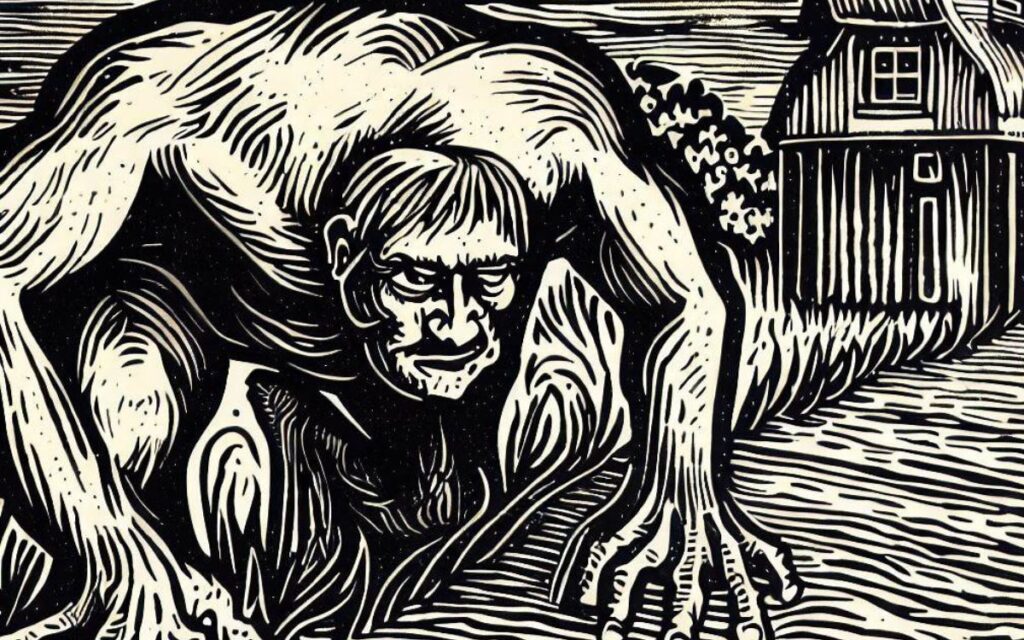Long Lankin, one of England’s most chilling folk ballads, continues to haunt audiences with its tale of betrayal, revenge, and murder

There are murder ballads, and then there’s Long Lankin. Of all the grisly tales woven into England’s folk traditions, few match this song’s spine-tingling terror and bloodshed.
A tale of betrayal, revenge, and cold-blooded murder, it has haunted listeners for centuries. But where does Long Lankin come from, and how did this macabre ballad become a staple of English folk music?
The Dark Origins of Long Lankin
The story of Long Lankin is believed to date back to the late medieval or early Tudor period when oral storytelling was the primary way of sharing news, legends, and moral tales.
The ballad has passed down through generations, with versions appearing across England and Scotland. Its origins, however, are murky. Some believe it was inspired by real events, though, like many tales from the past, fact and fiction have become intertwined.
The earliest recorded version of Long Lankin dates to the 1770s, though it had likely circulated in oral tradition long before. The ballad’s narrative centres around Long Lankin – sometimes called Lambkin or Lammikin – and his vengeful plot against a noble family.
Some historians speculate the name might come from a real person, perhaps a mason named Lankin who sought revenge after being cheated out of his wages.
Others suggest it taps into ancient fears of outsiders – those lurking at society’s edges, plotting to upend the established order.
Like all great folk songs, Long Lankin has evolved, adapting to the dialects and fears of those who sing it.
Yet, its core elements remain disturbingly consistent: a mother leaves her infant in the care of a nurse while she is away; a sinister figure,
Long Lankin, aided by the nurse, sneaks into the house and slaughters the baby; and when the mother returns, she meets the same grisly fate.
In some versions, Long Lankin is a disgruntled ex-servant seeking revenge on a treacherous master. In others, he’s an ominous outsider, a bogeyman lurking on the moors, waiting to strike. What binds all versions is a palpable dread, a sense that death is always lurking just outside the door.
One of the most famous versions was collected by folklorist Cecil Sharp in the early 20th century from Mrs. Gulliver of Somerset. Sharp’s version includes a haunting refrain that captures the tragic inevitability of the events:
“Oh! The master said to the nurse one day,
‘Where have you left my dear baby,
And how do you keep it so warm, warm, warm?’”
The nurse, complicit in the murder, replies:
“I have left it in the cradle small,
But I fear it is taking cold.”
But Lankin’s revenge is not yet complete. The mother is lured back by the nurse’s deceit, only to meet the same fate as her child.
What makes Long Lankin so compelling – and so shocking – is its raw depiction of violence and treachery. Unlike many folk ballads that tell tales of love, bravery, or tragedy, this song wallows in its darkness. There’s no redemption, no moral lesson – just a relentless unfolding of betrayal and bloodshed.
Part of its power lies in its chilling ambiguity. Who is Long Lankin? A wronged man seeking vengeance, or a malevolent spirit born from England’s ancient bogs? And what drives the nurse to betray her family? Is it greed, fear, or something darker?
Long Lankin taps into fears that go beyond its historical roots: the fear of a trust betrayed, of danger lurking within the home. It reminds us that the monsters we fear are not always outside; sometimes, they’re already inside, waiting to strike.
Over the centuries, Long Lankin has been sung by countless voices, each giving their own twist to this grisly tale. From the traditional folk singers of Northumberland to the modern renditions by Steeleye Span and Martin Carthy, the ballad has found new audiences and new contexts.
Steeleye Span’s 1975 version brought Long Lankin to the forefront of the British folk rock revival, with Maddy Prior’s haunting vocals capturing both horror and pathos.
Meanwhile, Martin Carthy’s stripped-back, acoustic interpretation in the 1960s returned the ballad to its roots as a stark narrative of murder and revenge.
Despite the centuries since Long Lankin first emerged, its grim tale of blood and betrayal remains as powerful as ever. It has become more than just a song; it’s a reminder of our timeless fascination with the macabre.
Listen to Long Lankin by The Wainwright Sisters
What do you think of Long Lankin? Have you heard different versions or interpretations? Share your thoughts in the comments!


